A unified theory of marketing measurement!?
Marketing is not rocket science, but reading around some of the measurement methodologies, particularly the recent interest in data driven attribution and market mix modelling, it would seem as though only the most expert data scientists are qualified to know how to get it right. Surely it cannot be that hard!?
What marketers need, it seems, is simple answers to questions that are technically quite challenging to get right. We need sound, accurate measurement, not lots of complex methods that all give us different answers.
Data and technology fragmentation in digital is as big a problem now as it was 20 years ago, but now it’s even worse: today have fragmented measurement as well.
Getting from 3 methods to just 1 unified approach
What if there could be a unified theory that cohesively bind all strands of marketing data, channels, and strategies, together as one. This theory would have to fuse the “trifecta” of Multi-Touch Attribution (MTA), Marketing Mix Modeling (MMM), and Experimentation – this three pronged measurement strategy has been suggested by WARC, IAB, Google and Meta. A unified approach implies a fusion of these three methods, suggesting a seamless integration that could somehow solve the fragmentation plaguing current marketing efforts.
However, a critical examination of the ‘trifecta’ reveals that approaches to integrate and coordinate these methodologies, while very much necessary, is insufficient in isolation. The real challenge lies not just in employing these tools, but in thoughtfully connecting them in a manner that aligns with diverse and nuanced business goals.
Beyond the trifecta: the need for integration with marketing strategy
The marketing industry’s fascination with the trifecta of MTA, MMM, and Experimentation often overlooks a crucial question: How should these methodologies be tied together? Is the ultimate goal simply to drive sales, or are there other, perhaps less tangible, objectives at play? Brand marketing efforts, for instance, are traditionally geared towards building long-term brand equity—a goal that doesn’t always translate directly into immediate financial returns but is vital for sustained market presence and a deeper long term connection with customers.
Moreover, financial objectives vary widely among organisations. Some might prioritize immediate sales, others might focus on customer lifetime value, and still others might emphasize profit margins. This diversity in goals necessitates a framework that is not only flexible but also distinctly tailored to the specific strategic needs of each organization.
Strategic and tactical synergy: the need for a cohesive process
To truly benefit from the strengths of MMM, MTA, and Experimentation, we must develop a process that synthesizes the strategic benefits of MMM with the tactical optimization capabilities of MTA, using Experimentation not just as a validation tool but as a continuous feedback mechanism that enhances both.
Marketing Mix Modeling (MMM) and strategic insights
MMM provides a macro-view, offering insights into how various elements of the marketing mix impact overall business outcomes over time. This strategic tool is indispensable for long-term planning and budget allocation but lacks the granularity to drive immediate tactical decisions.
Multi-Touch Attribution (MTA) and tactical decision-making
In contrast, MTA offers a micro-view, tracking the effectiveness of specific campaigns and touchpoints. This enables marketers to make immediate adjustments that optimize campaign performance. However, MTA’s focus on short-term results can sometimes lead to decisions that are misaligned with broader strategic goals.
Experimentation as the bridging mechanism
Experimentation, ideally, should serve as the bridge between MMM and MTA. By continuously testing and validating the insights gained from both approaches, Experimentation can help refine strategies and ensure that tactical adjustments are both effective in real-time and beneficial in the context of long-term objectives.
The need for an overarching strategy
What becomes clear through this critical lens is that no single method suffices on its own. The real power lies in an overarching framework that integrates these methodologies into a coherent, dynamic process. This process must be adaptable, capable of evolving with changing market conditions and business objectives, and must prioritize a balance between achieving immediate results and fostering long-term growth.
Just as each brand has its own unique brand and marketing strategy, so each brand must develop a complimentary measurement strategy, in order to drive this coherence. In others words, the unification you need comes first from a clear vision of your marketing strategy. The tifecta of methods are merely the means: you must define the ends, your strategic marketing goals, and align your measurement and processes to support these.
Conclusion: put your marketing first
The pursuit of a unified approach to marketing measurement is more than a technical challenge—it is a business imperative that demands a critical, nuanced approach. There is no one single methodology that solves all the problems of marketing measurement, but that does not mean measurement cannot serve a unified purpose. It is essential for marketers to not only employ all of the sophisticated measurement tools at their disposal, but to also develop a deeper understanding of how these tools can be cohesively deployed to serve both the immediate and long-term goals of their organisations. What you need, in other words, is a measurement strategy that is aligned with your marketing and business goals.
If you are serious about data driven growth and market mix optimisation, it’s time to think about what happens beyond the trifecta. Let’s engage in deeper conversations about how we can truly integrate these powerful tools to serve our marketing strategy, in an approach that not only measures but also guides and validates our how your engage customers to connect with your brand.
And of course we can help! Connect with Metageni today, by signing up to our newsletter, to learn more how we can help you develop a tailored, comprehensive measurement strategy that helps you drives real, sustained growth.













